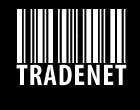BLOGSHARP: Cutting Edge Posts

Preparing a Quick Reference Chart
2008-05-19 10:19:55( Financial )
Importance of Quick Reference Charts
Quick reference charts are concise guides with brief instructions, diagrams or codes to aid you in operating equipment, performing business functions, learning new concepts at school, or cooking at home.
Instead of having to look up information in thick books or instruction manuals, you can easily find the right solutions for the most common situations just by using a quick reference chart.
The Ideal Quick Reference Chart
A quick reference chart should ideally be in one page, preferably on short bond paper or even smaller.
Information on quick reference charts is classified in columns for easy searching. The print must be large enough to be readable from at least a foot away, especially if it is used in the workplace. This is to allow posting on walls, cabinet doors or tabletops for easy access.
For school use, the size of quick reference charts should be no larger than the textbook that it was based on. This will enable students to insert the chart within the textbook pages.
Even for soft copies, the quick reference chart should not contain too many columns or cells. If possible, the left and right borders of the quick reference chart should fit within the screen at 100% actual size.
If possible, use colors for the headings and for putting emphasis on the most crucial parts of the quick reference chart. Since users of charts may already be familiar with most of the concepts, you only need to use key words, phrases or very short sentences in the contents. You can even use symbols to represent the information, but make sure to include a legend at the foot of the chart.
Other Tips for Preparing Quick Reference Charts
Use clean white paper or board to print your chart. If you need to prepare a very large chart and can't use a computer printer, then make sure that the data is written in a highly legible form.
You should research your data very carefully, and include only the most significant information. Check the data for accuracy and proofread the draft copy several times before finalizing.
Test out the chart yourself to check its effectiveness and accuracy, and ask a colleague or a student to try using it as well. Their feedback will help you make the necessary revisions.
All rights Reserved © Tradenet Services srl
Do not duplicate or redistribute in any form.
Blog
Tags
- Arts (73)
- Automobiles (375)
- Beauty (46)
- Business (989)
- Careers (12)
- Charity (71)
- Computers (788)
- Dating (153)
- Education (333)
- Entertainment (257)
- Family (39)
- Financial (2171)
- Games-Toys (7)
- Garden (68)
- Health (439)
- Hobbies (102)
- Home (311)
- Insurance (662)
- Legal (562)
- Online Shopping (67)
- Pharmeceutical-Medical (393)
- Real Estate (263)
- Sports (48)
- Style-Fashion (4)
- Technology (238)
- Telephony (235)
- Travel (283)
- Web Hosting-SEO-Web Design (786)
Archivio
- 2007
- 2008
- 2009
Tradenet Services srl 02860350244 Via Marconi, 3 36015 Schio (VI) Italy
+39-0445-575870 +39-0445-575399